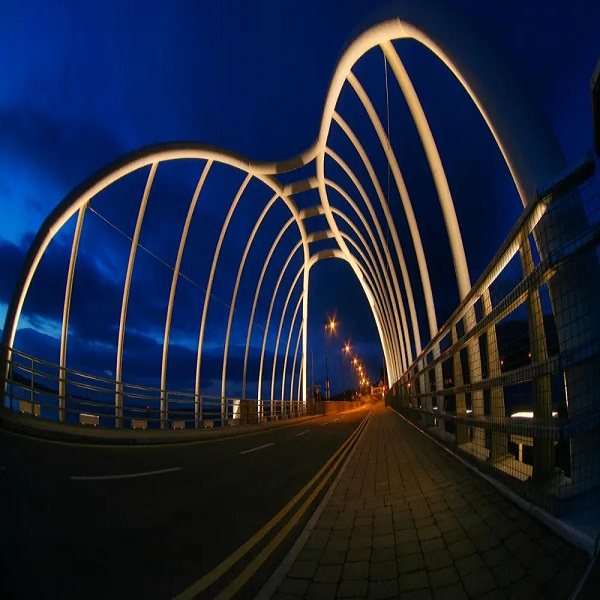Michael Davitt Bridge
As we approach Achill Island, you’ll be greeted by the Michael Davitt swing bridge. The bridge ushers road users across the water to the island (and back to the Corraun Peninsula). You can look forward to crossing the bridge in both directions during your Achill Island Day Tour.
Up until the late 1800s, there was no land connection between Achill and the mainland.
Some chose to cross by ferry, while at low tide, it was possible to cross by foot or on horseback. However, people sometimes got trapped by the rising tide, sadly leading to fatalities.

1887 - The First Michael Davitt Bridge.
In response to the need for a safe crossing, the first version of the bridge opened in 1887.
This was designed to bear the weight of horse-drawn traffic as well as pedestrians. Its swing mechanism allowed it to open for sea vessels to pass.
The new bridge was named after Michael Davitt (1846-1906), a well-known activist from Co. Mayo.
Davitt was born during the Great Famine in the village of Straide, located between the towns of Foxford and Castlebar.
When Davitt was four years old, his family was evicted from their home. This was common at the time, with landlords holding considerable power that kept many Irish farmers in poverty.
Many years later, to address this problem, Davitt founded the Land League in Co. Mayo. This local movement spread across the country, protesting against problems caused by the landlord/tenant farmer system.
Michael Davitt himself officially opened the first swing bridge.
1949 - The Second Michael Davitt Bridge
By the 1940s, motor vehicles were becoming more common. The original bridge was no longer suitable for the age of cars.
As a result, it was replaced with a more appropriate version, which opened in 1949.
2008- The Present Michael Davitt Bridge
By the 21st century, the second bridge was showing signs of age and damage. A third swing bridge was opened in 2008. Its design was inspired by the work of Spanish architect Santiago Calatrava. This bridge is still operated manually.
The bridge’s measurements come in at 6.5 metres (width), 225.5 metres (length) and 390 tonnes (weight).


